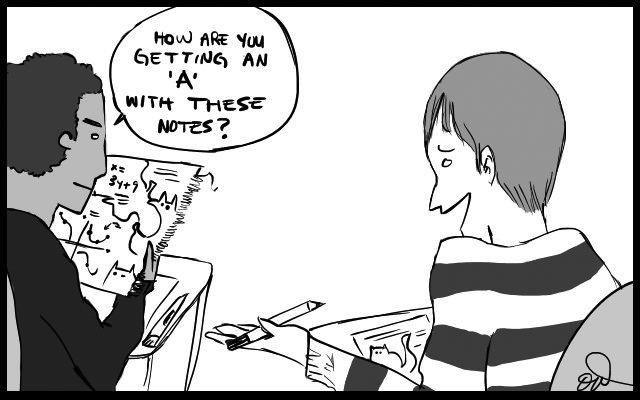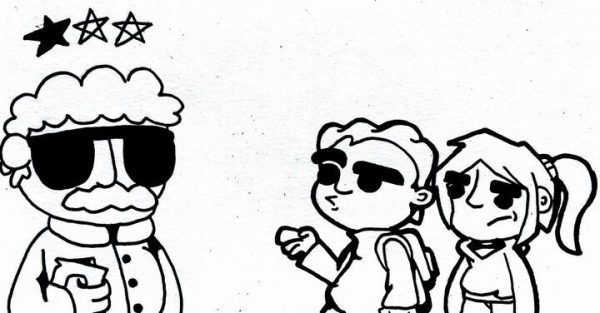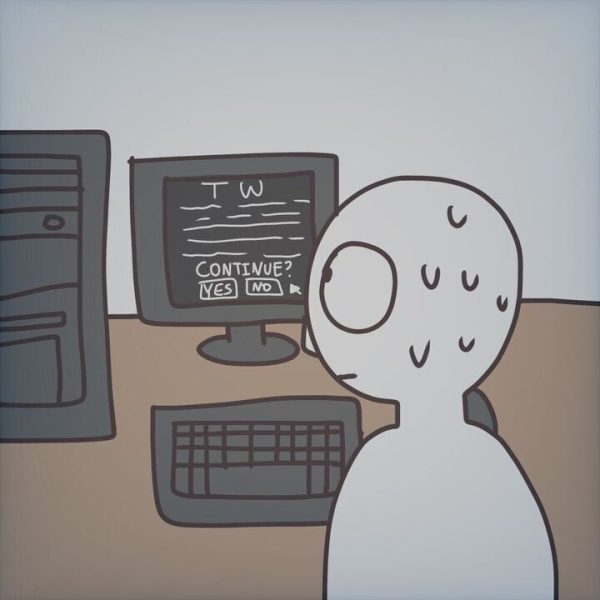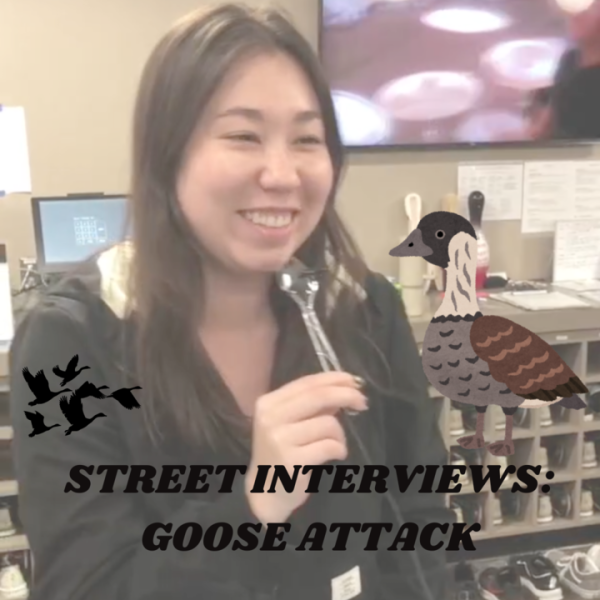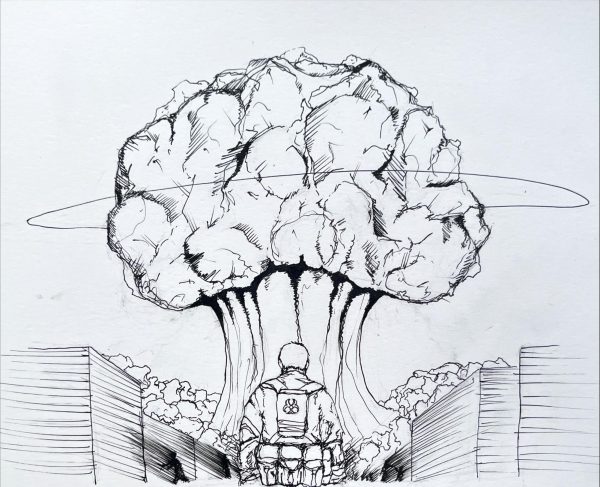Doodling can be useful
February 19, 2013
If you had an unhappy childhood, it was probably due to a teacher in grade school who made you feel lousy and embarrassed for doodling in class.
Well, there may be other reasons. Nonetheless it is time to break the cycle of guilt.
If you still doodle in your notes, rest easy: Scientists are finding that sketching is actually highly effective as a studying and note-taking skill.
“I doodle to pass the time,” said senior general studies major Chiquita Thornton. “I keep listening but I draw.”
It is very likely that Thornton keeps listening in class because she doodles, not in spite of the fact.
You see, idle drawing gives the brain a more specific intention than simply sitting and listening to a lecture or copying it down in writing, i.e. conventional note-taking. Doodling is a source of mild focus that one needs when taking in information and is a good grounding mechanism. Daydreaming, on the other hand, takes your mind far away from the classroom.
According to researcher Jackie Andrade, “a simple task, like doodling, may be sufficient to stop daydreaming without affecting performance on the main task.”
In Andrade’s study, 40 people listened to a recording and were asked to write down names of people mentioned on the tape that were going to a party. Half of the research panel was asked to take a pencil and shade in shapes on a piece of paper while they listened.
The 20 who “doodled” recalled an average of seven and a half out of eight names compared to the other half’s average of 5.8 names. Apparently, it does not matter what you draw; just the activity of drawing is aids your memory.
Drawing in class can have a more integrative purpose, though. Having the ability to visualize concepts in the first place is what helps you actually learn rather than recite notes. In fact, ancient Greek mathematicians used diagrams rather than equations to arrive at their points.
When I took anatomy in high school, I constantly made diagrams, charts and illustrations in my notebook of the bodily functions I was expected to familiarize myself with.
Later, outside of class, I would hand copy the drawings a few times and call it studying. As soon as I started this method, I did better on tests. Being able to see what was happening in the body definitely boosted my comprehension of it. Thus, I found freehand drawing as a form of note-taking can be particularly useful to science students, which is also what Lin Edwards of Medicalxpress reported in August 2011.
I think everyone learns better from being more hands-on. Let’s face it; school is boring unless we are actually doing or making something. Many students, including me, are visual learners. That is the reason drawing and other kinetic activities are now regarded as important educational tools in addition to reading, writing and speaking.
Today’s students have short attention spans and need something to keep them occupied at all times. Why not satisfy your latent creativity cravings while simultaneously preparing for your next exam?



